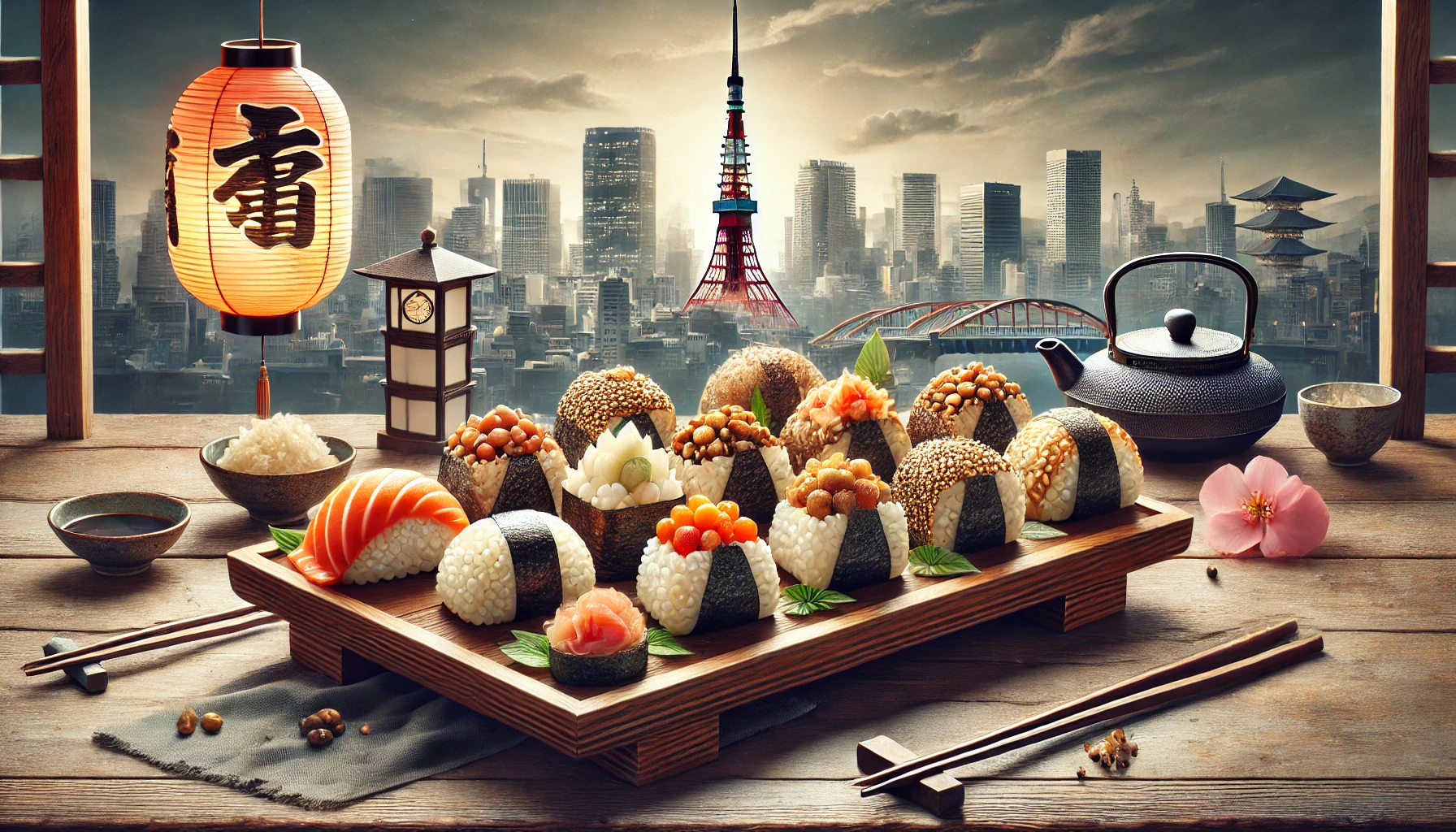Unique Rice Balls in Tokyo: Where to Find the Best Gourmet Onigiri
Unique Rice Balls in Tokyo: If you’ve ever visited Japan, you’ve likely encountered onigiri (rice balls) — a delicious staple of Japanese cuisine that comes in countless varieties. However, Tokyo takes this simple snack to a whole new level with premium and unique rice ball offerings that reflect both tradition and innovation. From luxury ingredients to artisanal craftsmanship, Tokyo’s rice balls are culinary works of art.
In this blog, we’ll explore the best places to find unique rice balls in Tokyo, highlight some of the best onigiri shops around the city, and dive into what makes these premium rice balls so special. Whether you’re seeking a traditional taste or a modern twist, this guide will help you discover Tokyo’s rice ball specialty at its finest.
Tokyo Rice Ball: A Culinary Tradition with a Modern Twist
What Makes Tokyo Rice Balls Special?
While onigiri is enjoyed across Japan, Tokyo rice balls often feature more innovative and upscale ingredients compared to their traditional counterparts. The city’s culinary culture emphasizes creativity and quality, and rice balls are no exception. In Tokyo, it’s not uncommon to find premium rice balls made with ingredients like truffle oil, wagyu beef, and organic vegetables.
The allure of these unique rice balls in Tokyo lies in their balance of simplicity and elegance. They still maintain the traditional triangle shape, often wrapped in nori (seaweed), but offer surprising flavors and textures that elevate them to gourmet status.
Traditional Flavors Meet Modern Innovation
One of the best aspects of Tokyo’s rice ball scene is the seamless blend of traditional flavors, such as salmon and umeboshi (pickled plum), with more modern and luxurious elements. Whether you’re a first-time traveler or a seasoned foodie, exploring onigiri in Tokyo offers something for everyone.
Where to Find Premium Rice Balls in Tokyo
The Best Onigiri Shops in Tokyo
- Manma Rice Ball Tokyo
Manma is one of the standout spots in the city for premium rice balls. Located in Shinjuku, this restaurant is known for its meticulous attention to detail and use of high-end ingredients. One of its signature creations is the expensive rice ball Tokyo is buzzing about — a rice ball that takes 20 years to perfect and comes with a price tag of 2,000 yen. This rice ball features rare, fermented ingredients that bring out deep and complex flavors. - Bongo
Another must-visit is Bongo, located in the Kita-Senju area. This shop is beloved for its creative variety of fillings, with everything from crab and roe to creamy avocado. It’s also a great place to experience the best onigiri in Tokyo, as Bongo consistently ranks high on lists of top rice ball restaurants. - Onigiri Asakusa Yadoroku
As the oldest onigiri shop in Tokyo, Yadoroku offers a glimpse into Japan’s culinary history. Established over 60 years ago, this family-owned shop serves traditional rice balls using time-honored methods. Yadoroku is a haven for rice ball purists who appreciate simple yet high-quality ingredients like seasonal fish and fresh seaweed.
Unique Rice Ball Creations You Need to Try
Exploring the Most Expensive Rice Ball in Tokyo
If you’re curious about Tokyo’s most luxurious rice ball, you’ll find it at Manma Rice Ball Tokyo. This expensive rice ball has garnered attention for both its price and its process. What makes it so special? It takes two decades of fermentation and the finest rice sourced from Japan’s Niigata Prefecture to create this culinary masterpiece. Not only is it an indulgence, but it’s also a testament to the skill and patience required to produce the perfect onigiri.
Other Unique Creations in Tokyo
While Manma rice balls are at the high end of the price spectrum, Tokyo’s rice ball scene offers plenty of more affordable yet equally creative options. Rice ball restaurants in Tokyo like Bongo feature an array of unique flavors such as spicy cod roe, grilled eel, and even cheese fillings, catering to adventurous eaters.
For those looking for something more traditional, shops like Yadoroku offer Tokyo rice ball specialties with classic fillings such as salted salmon, takana (pickled mustard leaves), and konbu (simmered seaweed).
The Best Places to Enjoy Onigiri in Tokyo
Casual Rice Ball Spots
Not all rice ball experiences in Tokyo come with a premium price. There are plenty of casual spots where you can grab a quick, delicious rice ball without breaking the bank. For example, Tokyo onigiri shops like Lawson and 7-Eleven serve high-quality, fresh rice balls daily. These convenience stores are famous for offering a wide selection of fillings, from chicken and mayo to tuna, making them a great option for a quick snack on the go.
Another casual spot is Onigiri BAKU in Harajuku. This shop specializes in unique rice balls that are freshly made to order. You can choose from a variety of fillings, and they also offer vegan-friendly options, making it a favorite for health-conscious visitors.
Rice Ball Restaurants
For those seeking a more formal dining experience, rice ball restaurants in Tokyo like Onigiri Café Risaku in Omotesando provide a more curated experience. With gourmet fillings such as duck, miso-marinated pork, and even tofu, these restaurants elevate rice balls to a fine dining level. Many of these eateries also focus on seasonal ingredients, so there’s always something new to try.
Discover the Best Rice Ball Specialties in Tokyo
The world of Tokyo rice balls is vast, offering everything from traditional onigiri to luxury creations like premium rice balls. Whether you’re visiting a renowned spot like Manma rice ball Tokyo for an extravagant experience or picking up a quick snack at a local shop, you’ll find that Tokyo is a city that truly celebrates the art of the rice ball.
As the demand for unique rice balls in Tokyo continues to grow, the city offers endless opportunities for culinary exploration. So next time you’re in Tokyo, don’t miss out on discovering the best onigiri shops, trying a rice ball specialty, or indulging in one of the city’s more premium creations.
For more insights into Japanese culinary traditions and other cultural experiences, visit Regent Studies to stay updated with the latest trends.




